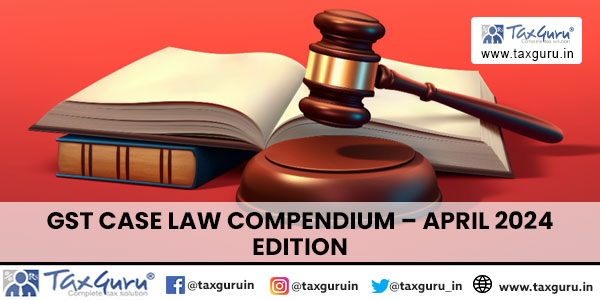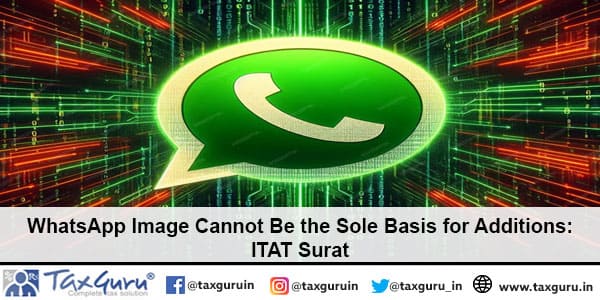Case Law Details
Case Name : M/s Voxiva India Pvt. Ltd. Vs The I.T.O. (ITAT Delhi)
Appeal Number : ITA No. 3448/Del /2016
Date of Judgement/Order : 27/04/2017
Related Assessment Year : 2011- 12
Courts :
All ITAT ITAT Delhi
1. Brief facts of the case are that during the course of assessment proceedings, the A.O observed that the assessee has claimed an expenditure of Rs. 15,36,414/- as contribution towards Employee’s Provident Fund. The assessee was specifically asked by the A.O to provide copy of approval by the CCIT/ CIT vide question No. 14 to letter dated 10.10.2013 whether the provident fund is recognized by the ld. CIT.
4. The A.O was not satisfied with the explanation of the assessee and he disallowed the contribution made to the recognized Provident Fund amounting to Rs. 15,36,414/-.
5. The ld. counsel for the assessee relied upon the submissions made before the ld. CIT(A) and the decisions relied upon therein whereas the ld. DR. on the other hand, relied upon the orders of the authorities below.
6. ITAT heard the rival contentions and perused the facts of the case available on record. It was pointed out by the ld. AR that the meaning of Recognized Provident Fund in Section 2(38) of the Income Tax Act, 1961 is quoted as here under:
“Recognized provident fund means a provident fund which has been and continues to be recognized by the Principal Chief Commissioner or Chief Commissioner or Principal Commissioner or Commissioner in accordance with the rules contained in Part A of the Fourth Schedule, and includes a provident fund established under a scheme framed under the Employees Provident Funds Act, 1952 (19 of 1952)”
7. It was argued by the ld. counsel for the assessee that the from above explanation and sections quoted above it is evident that definition of ‘recognized provident fund’ is an inclusive definition and the second condition of a provident fund established under a scheme framed under the Employees’ Provident Funds Act, 1952 (19 of 1952) is independent from the first condition of recognition of the fund by the Chief Commissioner as lays down under section 2(38) of the Income Tax Act, 1961. Therefore, to claim deduction under section 38( 1)(iv) of the Income Tax Act, 1931 scheme should either be framed under the Employees’ Provident Funds or should be approved by Commissioner under the Income Tax Act, 1961. The appellant has relied on the following case laws:-
b) (2009) 27 SOT 31 (DELHI) In the ITAT Delhi Bench ‘G’ Deputy Commissioner of Income Tax”, Central Circle-6, New Delhi Vs. Sahara India Employees Contributory Provident Fund.
b) ITA No. 3107/Del/2010 In the Income Tax Appellate Tribunal Delhi Bench : H : New Delhi ACIT, Haldwani, Uttarakhand Vs Udham Singh Nagar Distt. Co- operative bank
8. From the definition of the ‘Recognized Provident Fund’ in Section 2(38) of the Act, it is evident that there are two independent limbs of the definition, i.e. firstly, the approval/ recognition should be by the Principal CIT or Chief Commissioner or the Principal Commissioner or Commissioner in accordance with the I.T. Act and Rules. The second limb is that the Provident Fund should be established under a scheme framed under the Employees Provident Fund Act, 1952. These are two independent conditions and either of the condition has to be satisfied by the assessee. In the present case, the assessee has contributed to the Provident Fund established under a scheme framed under the Employees Provident Fund Act, 1952 and it has not taken any recognition from the I.T. department u/s 2(38) of the Act. In my view, the assessee satisfies the condition of contributing to Recognized Provident Fund as per section 2(38) of the Act. Reliance is placed on the decision of the Dy. CIT Vs. Sahara India Employees Contributory Provident Fund in ITA No. 1568/DEL/2007 dated 24.10.2008 and relevant para 11 is reproduced here under:
“11. A perusal of the definition given in section 2(38) as above shows that a provident fund which has been or continues to be recognized by the Chief Commissioner or the Commissioner in accordance with the rules contained in Part A of the Fourth Schedule is said to be a “recognized provident fund” as per the first limb of the definition given in section 2(38). Further, as per the second limb of the definition, a recognized provident fund also includes a provident fund established under the Employees’ Provident Fund Act, 1952. The definition given in section 2(38) thus is an inclusive definition and as per the second limb of the said definition which is independent of the first limb, it includes a provident fund established under a scheme framed under the Employees’ Provident Fund Act, 1952. It is pertinent to note here that the condition of recognition of the fund by the Chief Commissioner or Commissioner as stipulated in the first limb is consciously absent in the second limb which clearly depicts that such recognition is not a condition precedent for a provident fund established under a scheme framed under the Employees’ Provident Fund Act. 1952 to be a “recognized provident fund” within the meaning of section 2(38), We, therefore, find no merit in the contention raised by the learned DR that such recognition by the Chief CIT or CIT is required even in case of a provident fund established under a scheme framed under the Employees’ Provident Fund Act, 1952. In our opinion, a reading of the provisions of section 2(38) defining “recognized provident fund”especially the second limb thereof clearly shows that a provident fund established under a scheme framed under the Employee’ Provident Fund Act, 1952 has to be regarded as a recognized provident fund irrespective of whether the same has been recognized by the Chief Commissioner or Commissioner or not as rightly held by the learned CIT(A). Since the provident fund of the assessee- trust in respect of other concerns was undisputedly established under a scheme framed under the Employees’ Provident Fund Act, 1952, we are of the view that the same was a recognized provident fund within the meaning of section 2(38) even without recognition by the Chief CIT or CIT and any income received by the trustees on behalf of the said fund was exempt from tax as per clause (//) of sub-section (25) of section 10. In that view of the matter, we uphold the impugned order of the Assessing Officer to the total income of the assessee on account of income earned by the assessee from provident fund contributions from other concerns holding that the same was exempt under section 10(25) and dismiss this appeal filed by the revenue
9. This decision in the case of Sahara India Employees Contributory Provident Fund [supra] has been followed by the Division Bench of the ITAT Delhi in the case of Udham Singh Nagar Dist. Co-operative Bank Ltd in ITA No. 3107/DEL/2010 vide order dated 08.04.2013. The relevant part is reproduced herein below:
“7. Section 2 (38) of the Act reads as follows:-
“(38) “recognized provident fund” means a provident fund which has been and continues to be recognized by the Chief Commissioner or Commissioner in accordance with the rules contained in Part A of the Fourth Schedule, and includes a provident fund established under a scheme framed under the Employees’ Provident Fund Act, 1952 (19 of 1952)”
8. Thus, the Section is very clear in that it defines a “recognized provident fund” to include a Provident Fund established under a Scheme framed under the Employees’ Provident Fund Act, 1952 Now, obviously, the Assessing Officer erred in disallowing the claim of the assessee, inasmuch as in the assessment order, it was not even noted that the Trust of the assessee Bank was a Trust established under a Scheme framed under the Employees’ Provident Fund Act, 1952.
9. Once Section 2 (38) of the Act, as above, itself specifically provides a Provident Fund established under a Scheme framed under the Employees’ Provident Fund Act, 1952 to be a recognized Provident fund there is no reason for the claim of the assessee to be denied and we find the Ld. CIT (A) to have correctly rectified the error committed by the Assessing Officer.”
10. In the facts and circumstances of the case and the decisions relied upon herein above, the contribution made by the assessee is treated as contribution made to the recognized provident fund and accordingly deduction is allowable. Reliance placed by the ld. DR on the decision of the Hon’ble Delhi High Court in the case of Sony India [P] Ltd Vs. CIT reported in [2006] 285 ITR 213 [DEL] is on different facts where the issue before the Hon’ble High Court was not with respect to the two limbs of the decision u/s 2(38) of the Act and accordingly, this decision in the case of Sony India [P] Ltd Vs. CIT is not applicable in the present case. Thus Ground No. 1 of the assessee is allowed.
Kindly Refer to
Privacy Policy &
Complete Terms of Use and Disclaimer.



















